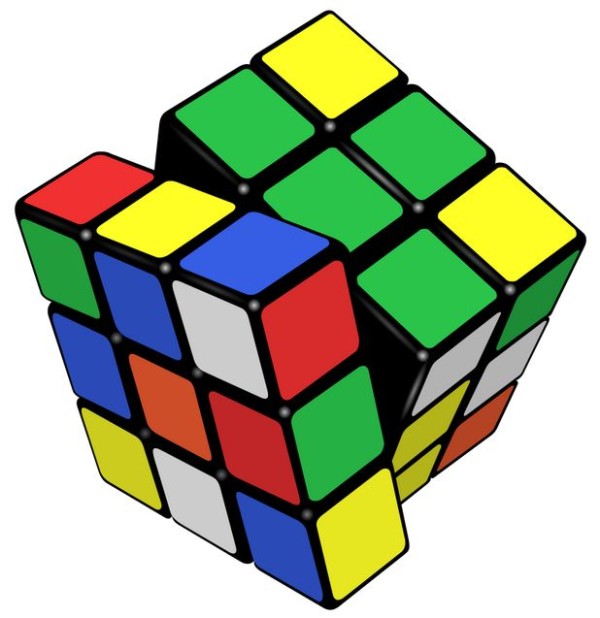The Defense Advanced Research Projects Agency (DARPA) which funds high-risk research and development projects, has issued 23 mathematical challenges (in other word, research). DARPA has mentioned that the solution of any one of these challenges would have the effect of “dramatically revolutionizing mathematics and thereby strengthening the scientific and technological capabilities” of the U.S. Department of Defense (DoD). Do you dare to jump into the mathematical challenges?
The challenges are nothing but to solve 23 questions. Beneath each questions, hints have been given. The 23 questions are based on within the field of physical and biological sciences, modeling and prediction, analysis and new materials. The solution of each questions are closely related to mathematics anyhow. Here are the 23 questions. Should you choose to accept any of the challenges?
Challenge 1 : The Mathematics of the Brain
Develop a mathematical theory to build a functional model of the brain that is mathematically consistent and predictive rather than merely biologically inspired.
Challenge 2 : The Dynamics of Networks
Develop the high-dimensional mathematics needed to accurately model and predict behavior in large-scale distributed networks that evolve over time occurring in communication, biology and the social sciences.
Challenge 3 : Capture and Harness Stochasticity in Nature
Address Mumford’s call for new mathematics for the 21st century. Develop methods that capture persistence in stochastic environments.
Challenge 4 : 21st Century Fluids
Classical fluid dynamics and the Navier-Stokes Equation were extraordinarily successful in obtaining quantitative understanding of shock waves, turbulence and solitons, but new methods are needed to tackle complex fluids such as foams, suspensions, gels and liquid crystals.
Challenge 5 : Biological Quantum Field Theory
Quantum and statistical methods have had great success modeling virus evolution. Can such techniques be used to model more complex systems such as bacteria? Can these techniques be used to control pathogen evolution?
Challenge 6 : Computational Duality
Duality in mathematics has been a profound tool for theoretical understanding. Can it be extended to develop principled computational techniques where duality and geometry are the basis for novel algorithms?
Challenge 7 : Occam’s Razor in Many Dimensions
As data collection increases can we “do more with less” by finding lower bounds for sensing complexity in systems? This is related to questions about entropy maximization algorithms.
Challenge 8 : Beyond Convex Optimization
Can linear algebra be replaced by algebraic geometry in a systematic way?
Challenge 9 : What are the Physical Consequences of Perelman’s Proof of Thurston’s Geometrization Theorem?
Can profound theoretical advances in understanding three dimensions be applied to construct and manipulate structures across scales to fabricate novel materials?
Challenge 10 : Algorithmic Origami and Biology
Build a stronger mathematical theory for isometric and rigid embedding that can give insight into protein folding.
Challenge 11 : Optimal Nanostructures
Develop new mathematics for constructing optimal globally symmetric structures by following simple local rules via the process of nanoscale self-assembly.
Challenge 12 : The Mathematics of Quantum Computing, Algorithms, and Entanglement
In the last century we learned how quantum phenomena shape our world. In the coming century we need to develop the mathematics required to control the quantum world.
Challenge 13 : Creating a Game Theory that Scales
What new scalable mathematics is needed to replace the traditional Partial Differential Equations (PDE) approach to differential games?
Challenge 14 : An Information Theory for Virus Evolution
Can Shannon’s theory shed light on this fundamental area of biology?
Challenge 15 : The Geometry of Genome Space
What notion of distance is needed to incorporate biological utility?
Challenge 16 : What are the Symmetries and Action Principles for Biology?
Extend our understanding of symmetries and action principles in biology along the lines of classical thermodynamics, to include important biological concepts such as robustness, modularity, evolvability, and variability.
Challenge 17 : Geometric Langlands and Quantum Physics
How does the Langlands program, which originated in number theory and representation theory, explain the fundamental symmetries of physics? And vice versa?
Challenge 18 : Arithmetic Langlands, Topology and Geometry
What is the role of homotopy theory in the classical, geometric and quantum Langlands programs?
Challenge 19 : Settle the Riemann Hypothesis
The Holy Grail of number theory.
Challenge 20 : Computation at Scale
How can we develop asymptotics for a world with massively many degrees of freedom?
Challenge 21 : Settle the Hodge Conjecture
This conjecture in algebraic geometry is a metaphor for transforming transcendental computations into algebraic ones.
Challenge 22 : Settle the Smooth Poincare Conjecture in Dimension 4
What are the implications for space-time and cosmology? And might the answer unlock the secret of “dark energy”?
Challenge 23 : What are the Fundamental Laws of Biology?
This question will remain front and center in the next 100 years. This challenge is placed last, as finding these laws will undoubtedly require the mathematics developed in answering several of the questions listed above.
For each right solution/answer, DARPA will present money as reward, but how much money DARPA will devote to its challenges has not been specified in the DARPA’s program announcement.
Let me share you what I did after having a peek into the questions. I said loudly, “Mum, get me a coffee. I think I’ve figured out what I’m going to be doing for the summer.” What about you, Guys? Would you do the same what I did? Or would you give a challenge to DARPA and others to solve making like this type of question : “You have only $10.00 in your pocket and the hamburger in the window costs $2.75. There is a bank across the street which has $1 million reserved and the cost of your car is $10,000. Now, find out, which direction is your grandmother driving when it started raining?”
Source : DARPA
Thanks To : Notices of the AMS
[ttjad keyword=”hot”]





Liked writer’s reaction after he reads all the Q and his created Q no 24 rather than DARPA’s queations
What is the question he created?